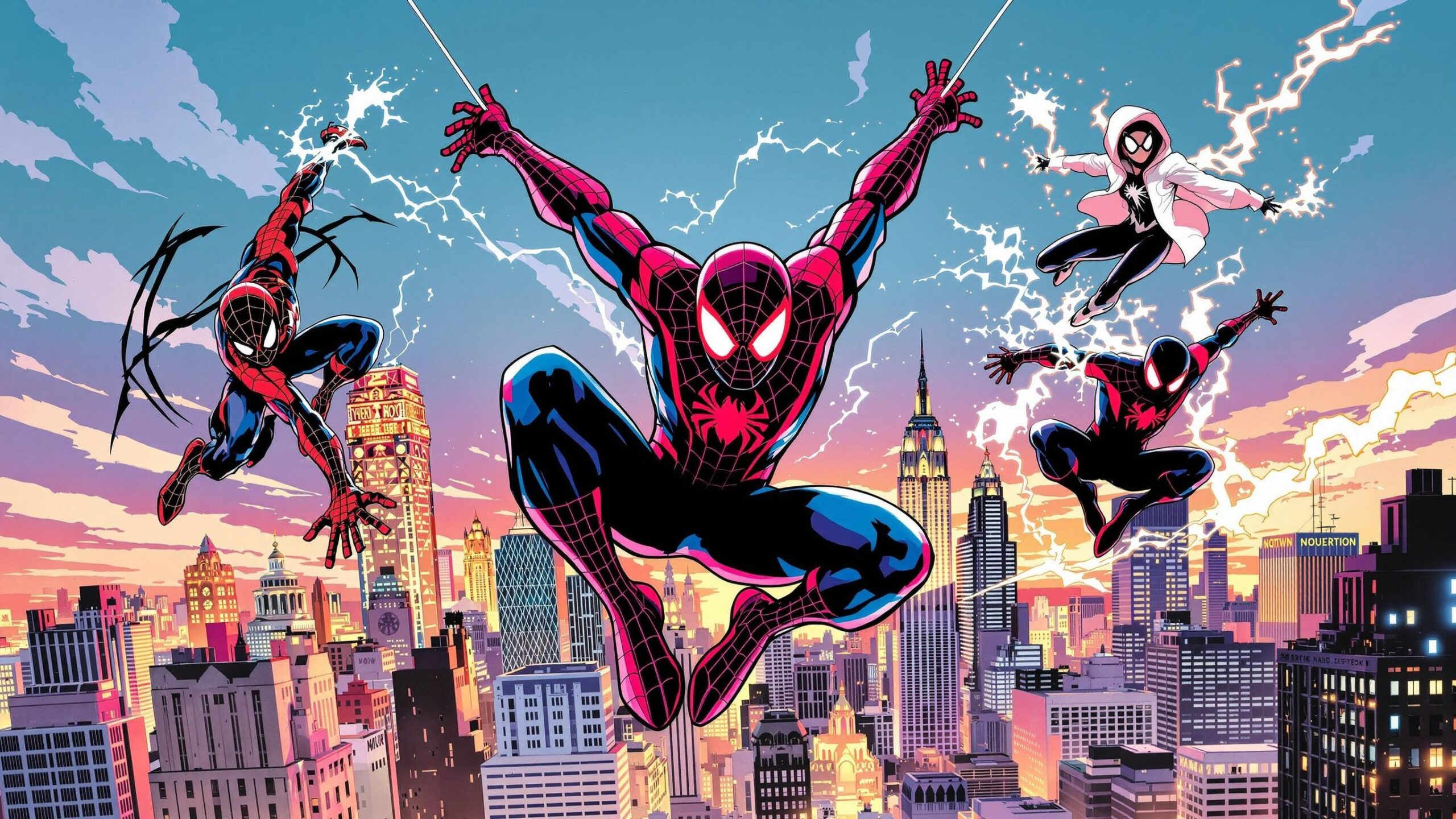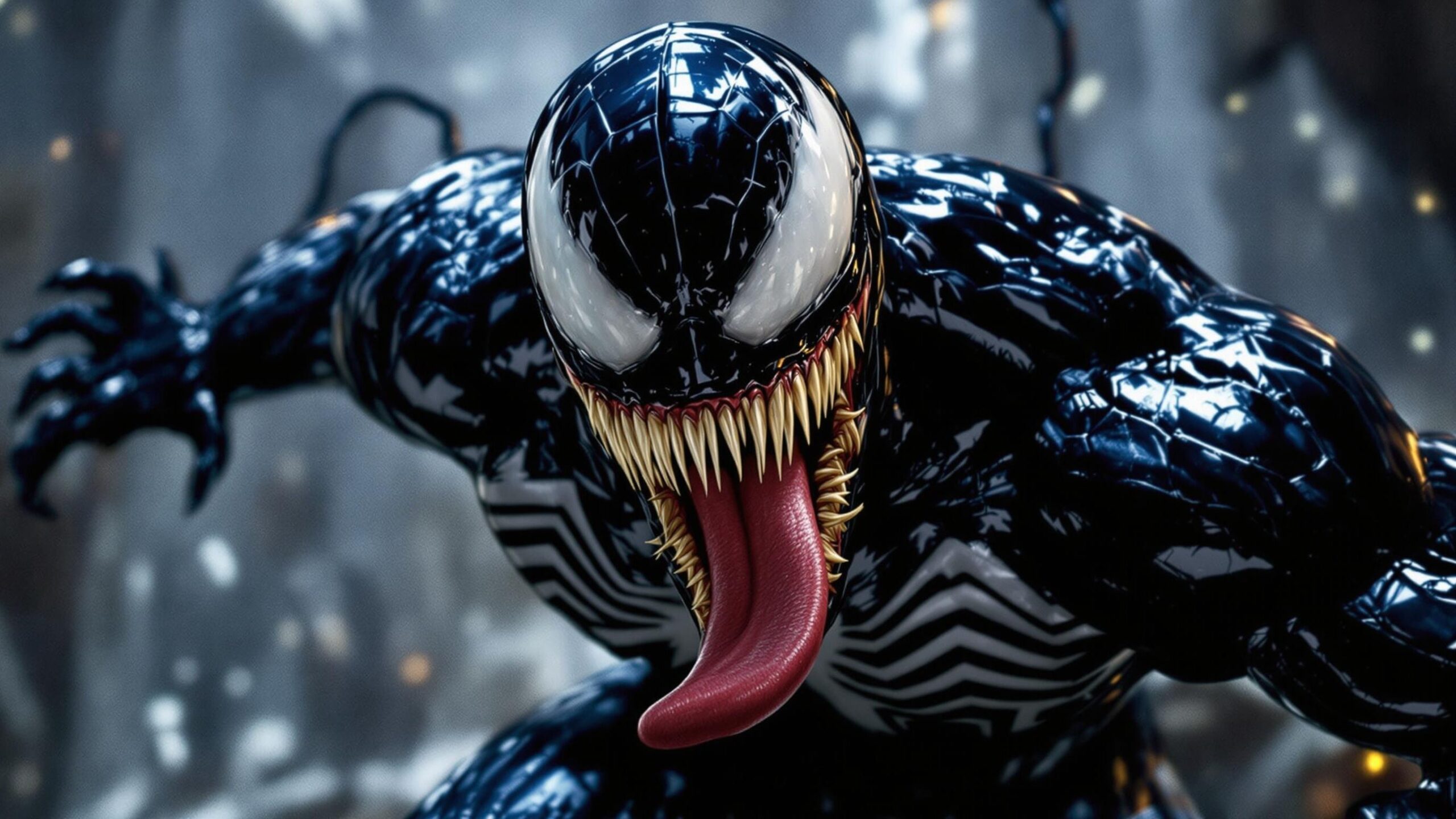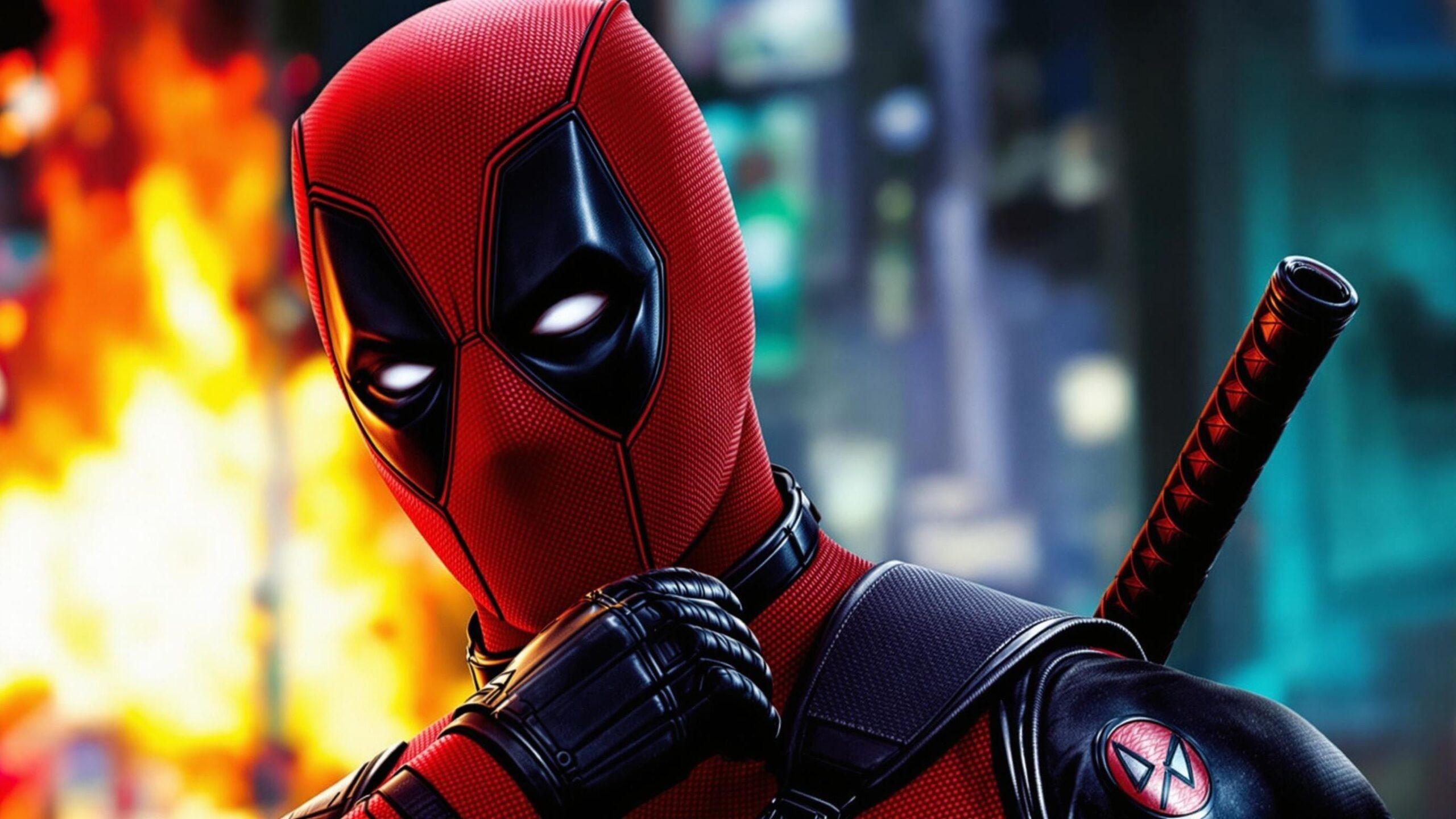Every story has an origin, and Spider-Man’s began with a radioactive spider, a science whiz named Peter Parker, and one of the most iconic lessons in comic book history: “With great power comes great responsibility.” The Earth-616 version of Peter Parker remains the core around which the multiverse spins. First appearing in Amazing Fantasy #15 in 1962, Stan Lee and Steve Ditko’s creation redefined what it meant to be a superhero—relatable, flawed, and burdened with the weight of personal responsibility. Peter juggled school, work, romance, and tragedy with the awkwardness of a teenager but the heart of a hero. Whether fighting the Green Goblin or struggling to pay rent, his grounded reality made readers care. Over decades, he evolved—becoming a teacher, an Avenger, and even, at times, a CEO. Yet at his core, he always remained the same quippy, earnest web-slinger with an unshakable moral compass.
Ultimate Spider-Man: A Modernized Peter with a Tragic Twist
When Marvel launched its Ultimate universe in the early 2000s, they gave Peter Parker a fresh coat of paint. Ultimate Spider-Man reintroduced a teenage Peter in a contemporary setting, with modern technology, younger villains, and more serialized storytelling. Written by Brian Michael Bendis, this reboot connected deeply with newer readers and emphasized a more intimate, serialized high school drama feel.
This Peter’s journey took a darker turn when he heroically died saving his loved ones—a death that shook the comic book world. Yet from his sacrifice arose a new hero, one who would carry the mantle forward in ways no one expected. The Ultimate Universe laid the groundwork for the multiverse expansion, proving that Spider-Man wasn’t bound to a single face or timeline.
Enter Miles Morales: The New Face of Spider-Man
Miles Morales wasn’t just a successor—he was a revolution. Created in 2011 by Brian Michael Bendis and Sara Pichelli, Miles burst onto the scene as a biracial teen navigating life in a post-Peter Parker world. Initially met with skepticism by some fans, Miles quickly won hearts with his unique blend of awkwardness, bravery, and sincerity.
What made Miles special wasn’t just his powers—which included invisibility and venom blasts—but his fresh cultural perspective. He dealt with code-switching, family expectations, and what it meant to inherit a legacy so tied to another person’s identity. Miles didn’t replace Peter; he expanded the definition of who could wear the mask. His story exploded in popularity, especially after the animated masterpiece Spider-Man: Into the Spider-Verse introduced him to a global audience, cementing him as a core part of the Spider-Verse mythos.
Spider-Gwen: A Ghost from Another Web
In another twist of the multiverse, Gwen Stacy—Peter Parker’s lost love—became a Spider-Woman herself in Edge of Spider-Verse #2. Dubbed “Spider-Gwen” by fans, Gwen’s story flips the classic Spider-Man origin: she gets bitten instead of Peter, and he tragically dies, driving her heroic journey.
Gwen’s world is filled with neon punk aesthetics, a killer drum kit, and a conflicted relationship with her father, Captain Stacy. Her look—white hooded suit, ballet shoes, and pink highlights—instantly became iconic. Spider-Gwen proved that the multiverse wasn’t just an excuse to tell “what-if” stories. It was a place where deep, character-driven narratives could thrive outside the constraints of mainline continuity.
Spider-Man 2099: Futuristic Threads and Genetic Upgrades
Zooming forward into a dystopian future, we meet Miguel O’Hara—Spider-Man of the year 2099. Introduced in 1992, Miguel was a geneticist who accidentally gave himself spider-like abilities while trying to recreate the original hero’s powers. His world, riddled with corporate corruption and cyberpunk aesthetics, offers a stark contrast to Peter Parker’s grounded New York.
Miguel brings a whole different energy to the role. He’s gruffer, more cynical, and technologically advanced, boasting talons, enhanced vision, and a super-cool digital cape. Spider-Man 2099 is a reminder that even in radically different settings, the core values of Spider-Man—justice, sacrifice, perseverance—can still shine through. Miguel has made a major resurgence in recent multiverse media, particularly Across the Spider-Verse, where his complex leadership and emotional burden add gravitas to the multiversal chaos.
Spider-Man Noir: Shadows and Trench Coats
Straight out of a pulp novel comes Spider-Man Noir, a trench coat-clad detective operating in the gritty 1930s. His world is steeped in darkness—both literal and moral. This Peter Parker doesn’t pull punches or jokes; he punches Nazis. Created in 2009, Spider-Man Noir plays with the classic tropes of the film noir genre, replacing high-tech gadgets with grit and a revolver.
Unlike his mainstream counterpart, this Spider-Man doesn’t hesitate to kill when necessary, making him a stark contrast to the idealistic Peter of Earth-616. And yet, his story still reflects themes of responsibility and personal loss. His popularity skyrocketed thanks to Into the Spider-Verse, where Nicolas Cage’s deadpan delivery turned Noir into a scene-stealing favorite.
Peni Parker and SP//dr: Anime Meets Web-Slinger
In the vast web of Spider-heroes, few are as visually unique as Peni Parker, a young girl who pilots a biomechanical suit powered by a radioactive spider. Her world blends anime tropes, cyberpunk design, and mecha action into one kinetic package. Introduced in Edge of Spider-Verse #5, Peni was a bold creative swing that paid off visually and emotionally.
Her partnership with SP//dr is both adorable and heartbreaking, especially when seen through the lens of a young girl trying to live up to expectations. Her presence in Into the Spider-Verse introduced mainstream fans to a version of Spider-Man who doesn’t just swing through cities—she rocket-launches through them with technicolor energy and emotional weight.
Peter B. Parker: The Washed-Up Mentor We Needed
In one of the most human portrayals of Spider-Man ever, Into the Spider-Verse gave us Peter B. Parker—a middle-aged, out-of-shape, emotionally distant version of the hero who’s seen better days. This Peter was divorced, disillusioned, and haunted by his failures. But he still had heart. And when he met Miles, something reawakened.
Peter B. represents the idea that heroes don’t need to be perfect to matter. His mentorship of Miles—reluctant, hilarious, and ultimately heartfelt—offered a fresh take on the role of legacy. This version of Peter is proof that even when Spider-Man falters, he always finds a way back to hope, often through helping others rise.
Spider-Ham: Comedy, Cartoons, and Cartoon Physics
Then there’s the pig. Spider-Ham, aka Peter Porker, is a literal cartoon pig version of Spider-Man who combines classic slapstick with spider powers. First appearing in Marvel Tails Starring Peter Porker, the Spectacular Spider-Ham in 1983, this version of the character leaned fully into parody, but never felt like a throwaway joke.
In Into the Spider-Verse, Spider-Ham balanced comic relief with surprising emotional resonance. Despite being from a Looney Tunes-style universe, he embodied the same ideals as every other Spider-Person. He reminded audiences that even the silliest versions of Spider-Man still come with a sense of duty, loss, and heart.
Across the Spider-Verse: A Celebration of Webbed Diversity
The recent multiverse-centered films, particularly Across the Spider-Verse, have elevated Spider-Man’s multiversal evolution to an art form. We see dozens of variations—punk rockers like Hobie Brown, horse-riding cowboys like Web-Slinger, and digital avatars like Spider-Byte. Each one embodies their own cultural lens, power set, and emotional arc.
This web of identities isn’t just aesthetic. It’s thematic. Spider-Man isn’t a single story—it’s a multiverse of resilience. The beauty of the Spider-Verse lies in its celebration of differences, and how each Spider-Person reflects the world they came from. It’s a lesson in empathy, identity, and how a single mask can unify vastly different lives under the same mission: protecting others no matter the odds.
Why the Spider-Verse Resonates Across Generations
What makes the evolution of Spider-Man through the multiverse so powerful is its relatability across countless generations. Every version of Spider-Man deals with loss, identity, and responsibility, but through lenses tailored to different audiences. Young readers might connect with Miles navigating school and culture, while adults may see themselves in Peter B. Parker’s regrets and second chances.
There’s no single “right” Spider-Man. And that’s the point. Whether you love the noir aesthetic, anime vibes, classic quips, or futuristic drama, there’s a version of the Web-Slinger for everyone. The multiverse doesn’t dilute Spider-Man—it amplifies him. It reminds us that the spirit of the hero isn’t in the spider bite—it’s in the choices that follow.
The Future of the Multiversal Web
With more movies, comics, and shows in development, the Spider-Verse is only expanding. New heroes will emerge. New timelines will twist. And fans will continue to see themselves reflected in a mask that has long since become a symbol of resilience. Whether it’s Gwen defying fate, Miles finding his identity, or Miguel protecting the multiverse with gritted teeth, the legacy of Spider-Man is in good hands.
As creators push the boundaries of what Spider-Man can be, they ensure that his story—no matter the universe—remains fresh, inclusive, and inspiring. The multiverse isn’t a gimmick. It’s a love letter to possibility, written in webs across infinite skies.
The Spider in All of Us
Spider-Man’s multiversal evolution isn’t just about cool suits or alternate timelines—it’s about the enduring truth that anyone can be a hero. From Peter to Miles, Gwen to Miguel, Noir to Ham, each version of Spider-Man reminds us that courage, sacrifice, and heart aren’t bound by one reality. They’re webbed across many. And wherever there’s a world in need of saving, a Spider will rise.
So, whether you swing through skyscrapers, glide through cyberspace, or leap between dimensions, there’s a Spider-Man in you too. All it takes is that one moment, that one bite, that one choice—to do the right thing, no matter the cost.



